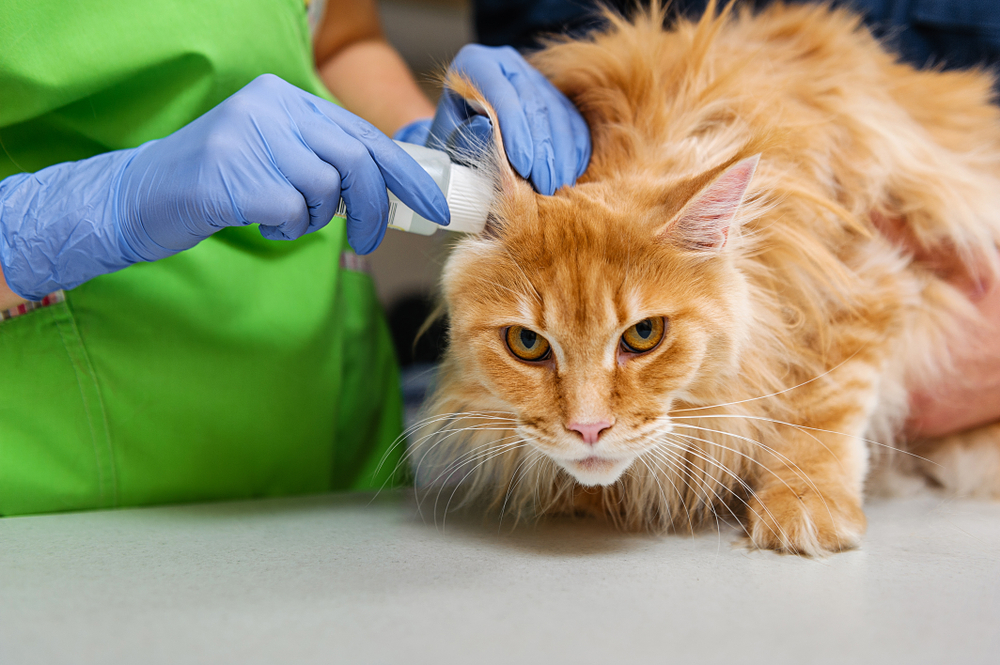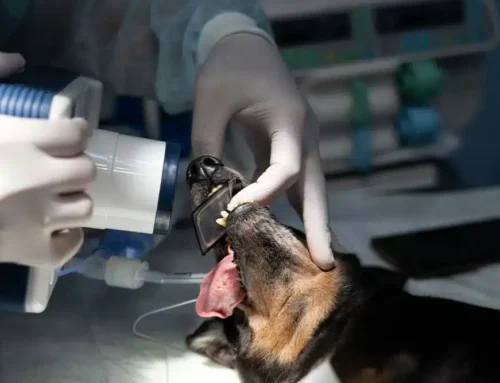Ear infections are a common and uncomfortable issue that affects many cats and dogs. As your pet’s health care champion, it’s crucial that you understand the signs, causes, and prevention methods for these infections to ensure your furry friend stays healthy and happy. Our Peak Pet Urgent Care team dives into the intricacies of ear infections in pets to provide you with the knowledge you need to recognize, address, and prevent these issues effectively.
Ear infection signs in pets
Recognizing ear infection signs in your pet is essential for prompt treatment. Common signs include:
- Scratching or rubbing the ears
- Head shaking or tilting
- Ear canal redness and swelling
- Yellow, brown, or bloody ear discharge
- A foul odor from the ears
- Sensitivity or pain when the ears are touched
- Behavior changes, such as irritability or lethargy
Ear infections can progress rapidly, leading to significant discomfort for your pet, so monitor your four-legged friend closely for any indication of an ear infection, especially if they are prone to ear problems.
Ear infection causes in pets
Several factors can contribute to ear infections in cats and dogs, including:
- Ear anatomy — Breeds with floppy ears, such as cocker spaniels and basset hounds, are more prone to ear infections, because they have less air circulation, more trapped moisture, and excessive hair in their ears.
- Moisture — Excessive moisture in the ear canal is an ideal breeding ground for bacteria and yeast, so pets who swim or bathe frequently develop more ear infections.
- Allergies — Environmental and food allergies can lead to ear inflammation and infections.
- Ear mites — These microscopic parasites can cause irritation and secondary infections in the ears.
- Foreign objects — Objects trapped in the ear canal, such as grass seeds or debris, can lead to infection.
- Hormonal imbalances — Conditions like hypothyroidism or Cushing’s disease can predispose pets to ear infections.
Ear infection diagnosis in pets
Diagnosing an ear infection in your pet typically involves a thorough examination by your primary care or Peak Pet Urgent Care veterinarian. We will inspect the ears for signs of inflammation, discharge, and odor, examining the ear canal and tympanic membrane with an otoscope. We will also collect samples of ear debris for microscopic analysis to enable identification of the underlying cause of infection.
Ear infection treatment for pets
Ear infection treatment for pets varies depending on the severity and underlying cause but may include:
- Cleaning — We will likely clean your pet’s ears to remove excess wax, debris, and discharge. A thorough cleaning may require sedation for anxious or painful pets.
- Topical ear medications — Topical ear medications are typically prescribed to combat yeast, bacterial, or mite infections. You may need to administer drops or ointments at home, or we may treat your pet with a long-lasting otic medication in our hospital.
- Pain management — Pets with ear infections often feel discomfort or pain, so we will prescribe pain relievers or anti-inflammatory medications for their swelling, pain, and inflammation.
- Chronic condition management — If an underlying condition, such as allergies or hormonal imbalances, is contributing to the ear infection, your primary care veterinarian will develop a treatment plan to address these issues.
Ear infection prevention tips for pets

While not all ear infections can be prevented, you can take steps to reduce your pet’s risk. Steps include:
- Regular ear cleaning — Clean your pet’s ears regularly with a veterinarian-approved cleanser to remove excess wax and debris.
- Routine veterinary care — Schedule regular wellness exams with your primary care veterinarian to inspect your pet’s ears for signs of infection or other issues.
- Allergy management — Work with your veterinarian to identify and manage any underlying allergies that may contribute to ear infections.
- Parasite control — Use monthly flea and tick preventives to protect your pet from ear mites and other parasites.
- Avoid moisture — Keep your pet’s ears dry, especially after swimming or bathing. Protect the ears with cotton balls during water activities.
Ear infections can be uncomfortable and downright painful for your four-legged friend, but your understanding, proper care, and preventive measures can help keep their ears healthy and infection-free.
If you suspect your pet has an ear infection, don’t hesitate to seek veterinary attention for diagnosis and treatment. Give our Peak Pet Urgent Care team a call if your primary care veterinarian is unable to see your pet promptly.







Leave A Comment